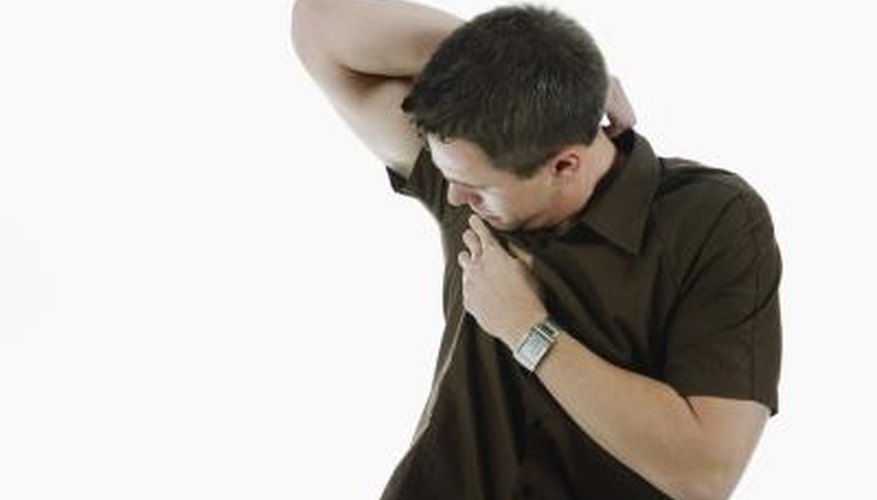Healthy bodies produce sweat in reaction to exercise, a rise in temperature, or stress and anxiety. According to Mayo Clinic, sweating regulates body temperature and maintains a balance of fluids and chemicals, such as sodium and calcium, in the body. Sweat itself is odourless, but when it is broken down by bacteria, odour arises giving off the characteristic scent of body odour. Improved hygiene typically controls body odour, but sometimes it is unavoidable. When odour develops, it gets trapped in delicate fabrics and reappears with a vengeance when the article of clothing is worn again. Removing the odour during laundering is key to keeping your garments smelling fresh and odour free.
- Healthy bodies produce sweat in reaction to exercise, a rise in temperature, or stress and anxiety.
- When odour develops, it gets trapped in delicate fabrics and reappears with a vengeance when the article of clothing is worn again.
Pretreat with presoak with enzyme based products or scrub the underarm area with washing powder. Launder as usual. If odours persist after laundering, place the article of clothing in a bucket of warm water and salt. Mix 3/4 tsp of salt to each quart of water. Allow the garment to soak overnight. Rinse the garment in clear water and dry as usual.
Spray white vinegar or vodka on the effected underarm area and allow it to dry to remove perspiration odours. This method may remove odours quickly, even if you do not have time to launder the fabric, making it a quick fix when you discover laundered clothes that retain perspiration odour.
Use bleach if other methods fail. The Textiles Industry Affairs recommends pretreating the fabric with a stain remover and laundering it in the hottest temperature recommended for the fabric. Use the appropriate bleach for the fabric.
WARNING
Do not put clothes in the dryer if perspiration odour is present, as heat sets the odour and makes it difficult to remove.
